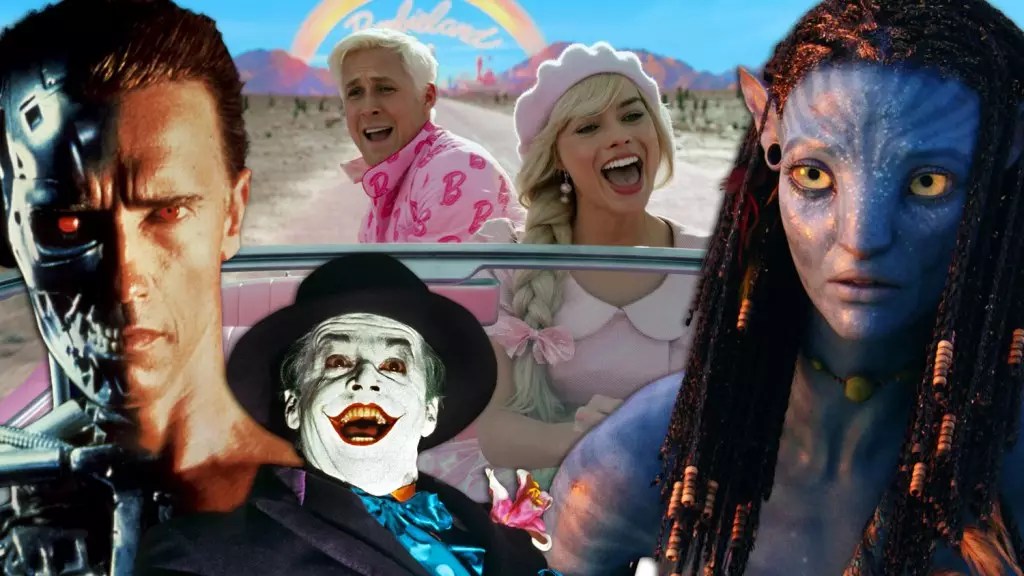The landscape of cinema has seen remarkable transformations over the decades, particularly regarding box office revenue. A recent compilation reveals a fascinating array of films that dominated the North American box office since 1977. From animated classics to superhero epics, these films underscore not only the changing tastes of audiences but also the growing influence of major studios. As we navigate through the highest-grossing movies listed by Deadline, we gain a deeper understanding of the cinematic trends that have defined modern filmmaking.
In examining the highest-grossing films, one cannot overlook the overwhelming dominance of specific genres. Superhero films, animations, and titles from the expansive Star Wars and Harry Potter universes repeatedly appear at the top of this prestigious list. Take, for instance, the latest champion, “Inside Out 2,” which raked in an impressive total of $652,980,194 since its release in June 2024. This film illustrates how audience affinity for meticulously crafted animated stories continues to thrive.
Furthermore, several other contenders have left their mark in the annals of box office history. “Avatar,” “Star Wars: The Force Awakens,” and various Marvel Cinematic Universe (MCU) entries have not only achieved financial success but have also become cultural phenomena. These films are not merely entertainment; they encapsulate moments in time when specific narratives resonated with the populace.
A deeper analysis of box office success reveals a pattern tied to specific distributors. Companies like Walt Disney Studios, Warner Bros., and Sony Pictures dominate the list with their strategic releases and marketing prowess. For example, Disney’s impressive tally of films such as “Avengers: Endgame,” “The Lion King,” and more recently, “Frozen II,” highlights how the studio’s interconnected franchises bolster box office numbers.
The robust revenue generated primarily by these major studios reflects a broader industry shift towards franchise filmmaking. Audiences are drawn to familiar characters and universes, leading to repeat viewings and heightened anticipation for sequels and spin-offs. This model has proven lucrative, appealing to established fan bases while simultaneously attracting new viewers eager to partake in the collective cinematic experience.
While familiar franchises dominate box office rankings, the underlying factors influencing audience preferences deserve scrutiny. The appeal of nostalgia plays a significant role; many viewers are inclined toward films that evoke fond memories from their childhood. This is exemplified by franchises like Harry Potter and Star Wars, which have successfully maintained their allure across generations. Audiences find comfort in these established narratives, resulting in consistent engagement at the box office.
Moreover, the rise of streaming platforms has profoundly affected viewing habits. The pandemic era has notably accelerated this shift, with audiences increasingly drawn to convenience. However, this presents a paradox: while streaming services offer the allure of flexibility, they cannot replicate the communal experience of watching a blockbuster in theaters. As a result, studios continue to invest in cinema releases to maximize box office returns, especially for projects with franchise potential.
Looking ahead, it remains to be seen how the theatrical landscape will evolve in response to both box office trends and changing consumption patterns. Will we continue to witness the supremacy of franchise films, or will new genres emerge that captivate audiences in unforeseen ways? The recent success of unique narratives and diverse storytelling might hint at a shifting paradigm. The resurgence of indie films and innovative formats offers a glimpse into an expanding cinematic realm, highlighting the ongoing evolution of filmmaking.
The compilation of the highest-grossing films since 1977 not only serves as a testament to the success of specific titles but also illustrates the dynamic interplay between audience preferences and industry practices. As studios adapt to changing landscapes while trying to captivate viewers with both familiar and fresh content, the box office will undeniably continue to be a battleground for cinematic excellence. The narrative of box office success is ever-evolving and remains a crucial aspect of understanding both the art and business of film in modern society.


Leave a Reply